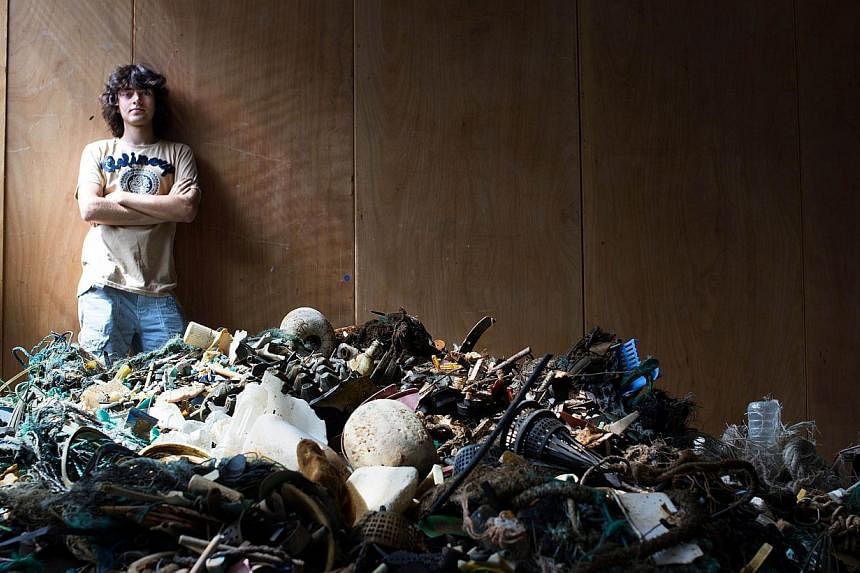When Dutch teenager Boyan Slat, then 16, saw alarming quantities of plastic floating in the Aegean Sea while diving during a Greek family vacation in 2011, he thought - like many others would - that something must be done.

But because Mr Slat is not like most people, he has actually come up with a potential solution.
"Once I'm working on something, I only stop when it is done," he said, sitting in the Delft offices of The Ocean Cleanup, the non-profit organisation he founded to rid the world's oceans of plastic.
After noticing the debris in Greece, Mr Slat embarked on a high-school project with a partner, trying to measure plastic pollution in the North Sea. Though the exercise yielded little useful data - the measuring tool the teens built broke in the ocean's currents - it did result in a good grade and a notice in a small Delft newspaper.
An organiser for the local TEDx Talk asked Mr Slat to present his findings, so he fleshed out his idea: Rather than actively fishing for plastic with nets, he proposed a passive clean-up system using the natural movement of currents and the wind to trap garbage against a barrier.
His talk was well-received, and he has since assembled a team of close to 100 experts - offshore engineers, maritime legal experts, ecologists and marine biologists - to test, optimise and develop his system. Their solution is a V-shaped floating boom that reaches about 3m under the surface of the water. It captures the plastic that drifts into it while leaving wildlife unscathed, then channels the plastic into a solar-powered extracting platform.
The goal is to install the system by 2020 midway between California and Hawaii, close to the North Pacific Garbage Patch.
Estimated to cost US$300 million (S$381 million) - Mr Slat claims that would be 33 times cheaper than using vessels with nets - the contraption extends roughly 100km. The set-up could be replicated elsewhere.
By assembling a team to build what is essentially a sophisticated vacuum cleaner and dustpan, Mr Slat has shown the power of a determined outsider who is willing to ask the right people for help. In the last year alone, he says he has sent out roughly 13,000 e-mail messages.
"When a young man of 17 years comes to you and tells you his plan, it is rather shocking, because many people have tried to do this," said Dr Santiago Garcia Espallargas, from the faculty of aerospace engineering at the elite Technical University of Delft.
"He was totally open to exploring things he didn't know about… Here was this really young student coming up with ideas that could change the world."
Once Mr Slat's clean-up project started to take shape and garner media attention, experts came knocking on his door.
"Those most eager to help are the ones who see the problem first-hand, like sailors and divers," said The Ocean Cleanup's lead engineer Jan de Sonneville.
Though estimates vary, Greenpeace believes that, each year, 10 million tonnes of plastic end up in the ocean. Some 80 per cent comes from land, while the rest is from commercial ships that lose their cargo or dump illegally.
Pushed by currents, the plastic tends to accumulate in large patches, far out at sea. The biggest is the Great Pacific Garbage Patch, which Greenpeace says is the size of Texas. In addition to affecting birds, mammals and fish which swallow or entangle themselves in the plastic, the trash eventually breaks down into fragments, creating a toxic soup that enters the food chain.
This spring, The Ocean Cleanup released a 530-page feasibility study outlining the challenges and solutions of its proposal in great detail - from the legal implications of anchoring a garbage extractor in the Pacific to the ways that retrieved plastic can be recycled. Though much has been made of Mr Slat's youth, he seems to find nothing unusual in organising such an ambitious project.
"It wasn't like we planned on (my age) being a PR tool," he said.
But he did concede that it helped him gain access to experts during the early stages. "If I were 40 years old, I think it would have been a lot more difficult."
Share your ideas and become part of the story: sparknews.com/ijd/makesense

